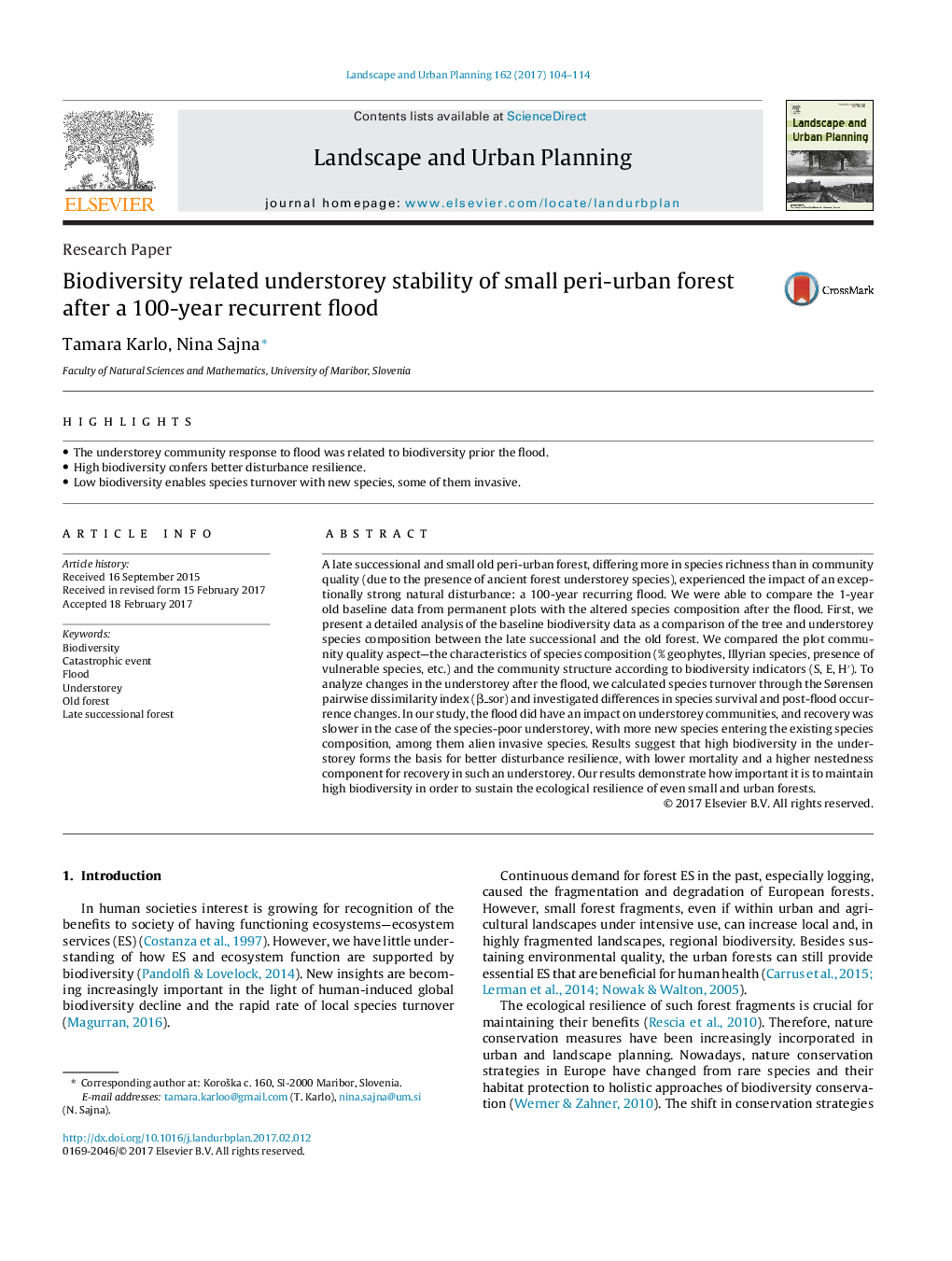| Article ID | Journal | Published Year | Pages | File Type |
|---|---|---|---|---|
| 5115049 | Landscape and Urban Planning | 2017 | 11 Pages |
Abstract
A late successional and small old peri-urban forest, differing more in species richness than in community quality (due to the presence of ancient forest understorey species), experienced the impact of an exceptionally strong natural disturbance: a 100-year recurring flood. We were able to compare the 1-year old baseline data from permanent plots with the altered species composition after the flood. First, we present a detailed analysis of the baseline biodiversity data as a comparison of the tree and understorey species composition between the late successional and the old forest. We compared the plot community quality aspect-the characteristics of species composition (% geophytes, Illyrian species, presence of vulnerable species, etc.) and the community structure according to biodiversity indicators (S, E, Hâ²). To analyze changes in the understorey after the flood, we calculated species turnover through the Sørensen pairwise dissimilarity index (β_sor) and investigated differences in species survival and post-flood occurrence changes. In our study, the flood did have an impact on understorey communities, and recovery was slower in the case of the species-poor understorey, with more new species entering the existing species composition, among them alien invasive species. Results suggest that high biodiversity in the understorey forms the basis for better disturbance resilience, with lower mortality and a higher nestedness component for recovery in such an understorey. Our results demonstrate how important it is to maintain high biodiversity in order to sustain the ecological resilience of even small and urban forests.
Related Topics
Life Sciences
Agricultural and Biological Sciences
Ecology, Evolution, Behavior and Systematics
Authors
Tamara Karlo, Nina Sajna,
